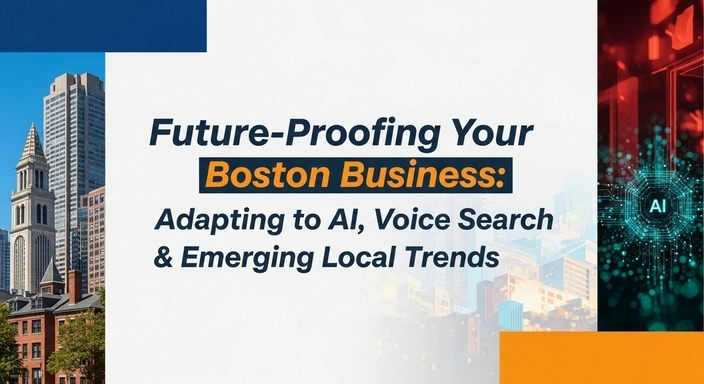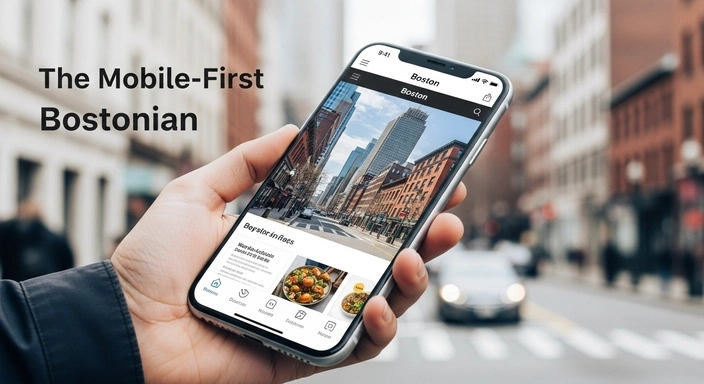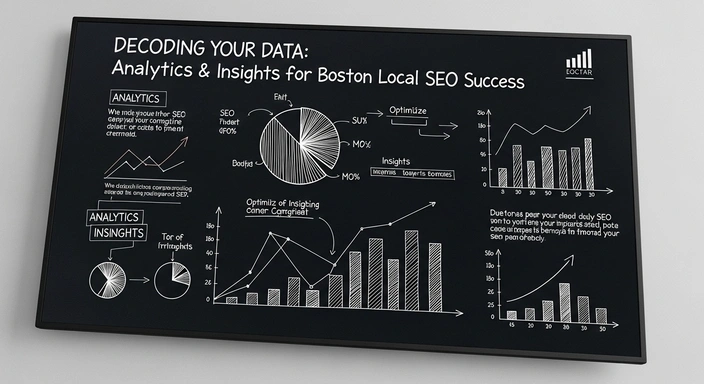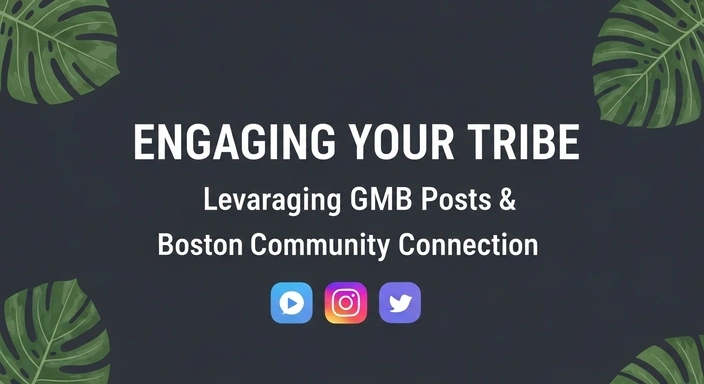This article is the seventh in our 12-part series: Beyond the Boom: How Boston Businesses Can Dominate Local Search & Drive Foot Traffic in a Shifting Economy. If you missed the previous essential guides, catch up on Beyond Keywords: Understanding Boston’s Hyper-Local Search Intent & How to CaptuThe Power of Proximity: Geo-Targeting Strategies for Boston Neighborhoods (and Beyond), Beyond Yelp: Cultivating a Five-Star Reputation with Boston Customer Reviews. Discover the full series here.
In our rigorous pursuit of local digital dominance for Boston businesses in 2025, we’ve systematically constructed a robust framework: analyzing economic shifts, perfecting Google Business Profile (GBP) optimization, dissecting hyper-local search intent, mastering geo-targeting, cultivating five-star reputations, and earning authoritative local links. Each of these pillars is crucial, forming the scaffolding for your online presence. Yet, at the very core of digital communication and persuasion, connecting directly with your audience and compelling them to act, lies **Content.** But not just any content. We’re talking about **hyper-local content that converts**—digital assets meticulously designed to resonate deeply with Boston audiences, fulfill their specific intents, and compel them to take decisive action, whether it’s a phone call, an in-store visit, or an online booking.
The modern consumer’s path to purchase is rarely linear, especially in a dynamic urban environment like Boston. They might start with a broad, local search query on Google, stumble upon a helpful local guide, then cross-reference reviews, and finally land on a service page. At every single touchpoint, your content must be a compelling, authoritative, and trustworthy beacon. For Boston businesses—whether you’re a boutique on Newbury Street, a law firm in the Financial District, a restaurant in the North End, or a service provider operating across multiple Greater Boston neighborhoods—your content strategy must transcend generic advice and embrace the unique culture, distinct challenges, and unparalleled opportunities of our city and its diverse communities. It’s about speaking directly to a resident of Dorchester looking for reliable home repair, a student in Allston seeking affordable yet quality dining, or a busy professional in Kendall Square needing specialized legal or biotech consulting.
The landscape of content quality and evaluation has undergone a profound transformation, driven primarily by Google’s relentless focus on user experience and the advancements in Artificial Intelligence (AI). Google’s **Helpful Content System (HCS)**, continuously refined throughout 2024 and deeply integrated into its core algorithm with the June 2025 Core Update, rigorously evaluates content quality. In 2025, Google explicitly emphasizes content that is “user-first,” “original,” “helpful,” and demonstrates profound **E-E-A-T (Experience, Expertise, Authoritativeness, Trustworthiness)**. This is particularly crucial for local content, where real-world experience, local authenticity, and verifiable expertise are paramount. Furthermore, the rise of AI in search, exemplified by Google’s **Search Generative Experience (SGE)**, means your content isn’t just vying for a click; it’s being evaluated as a potential “information building block” for AI Overviews, demanding even greater clarity, accuracy, authority, and conciseness. As eLearning Industry notes, the objective is now information retrieval, not just clicks.
This comprehensive guide will deep dive into the art and science of crafting hyper-local content that truly converts for Boston audiences. We’ll explore strategic content ideation informed by local insights, meticulous creation processes for both high-impact blog posts and conversion-focused landing pages, advanced on-page optimization techniques tailored for local relevance, the critical role of authentic visuals and ethical AI integration, and the precise metrics that genuinely matter for measuring content performance. Mastering this pillar ensures your Boston business’s digital voice is not only heard but acted upon, transforming casual browsers into loyal, high-value customers and cementing your local market leadership for years to come.
—
The Strategic Imperative: Why Hyper-Local Content is Your Conversion Engine in 2025
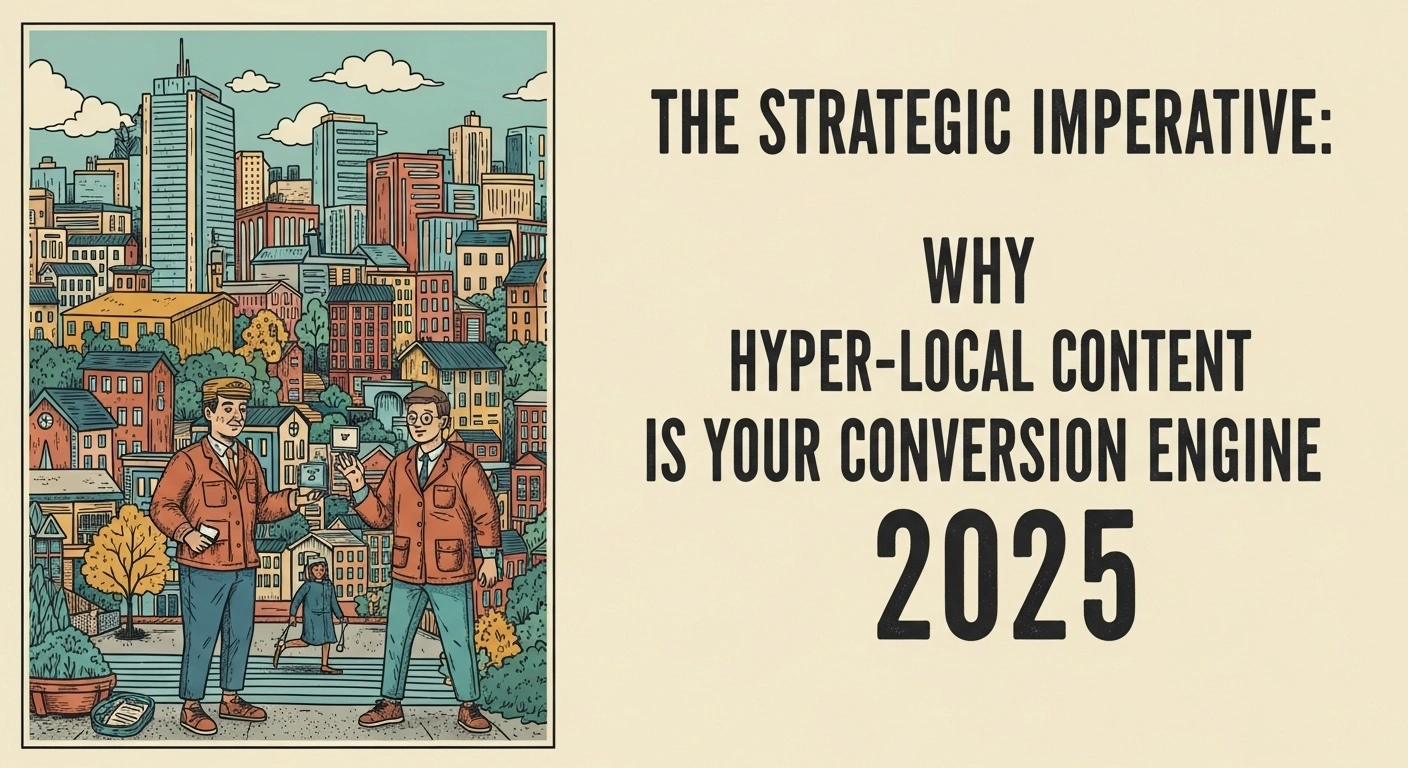
In the highly competitive and rapidly evolving digital landscape of 2025, content serves multiple sophisticated purposes, ranging from broad brand awareness to direct sales. For Boston businesses, hyper-local content is uniquely powerful because it transcends generic information, directly addressing the specific needs, cultural nuances, and geographic context of a defined local audience, thereby driving significantly higher engagement and, crucially, measurable conversions.
1. Meeting Google’s Helpful Content System (HCS) & E-E-A-T Mandates
Google’s HCS, continuously refined throughout 2024 and 2025, represents a fundamental shift in how Google evaluates and ranks content. Its core tenet is to prioritize content that is genuinely helpful, original, and demonstrably created by people, for people. For local businesses in Boston, this translates directly to a stringent demand for content that:
- Showcases Authentic Experience (E): Your content must radiate real-world experience in serving the Boston community. This isn’t theoretical knowledge; it’s practical, hands-on insight. Use specific, relatable examples that resonate with local residents (e.g., a Boston plumber describing a unique challenge faced in a historic Beacon Hill brownstone due to old piping, or a North End restaurateur sharing firsthand insights on sourcing fresh seafood directly from Boston Harbor). Visuals showcasing your actual Boston location, your dedicated local team, and your services in action within the city’s unique environments are invaluable demonstrations of this experience. Google’s latest core updates are heavily rewarding sites that clearly show firsthand experience.
- Demonstrates Expertise & Authoritativeness (E): Content should be meticulously researched, factually accurate, and ideally written by or clearly attributed to individuals with demonstrable expertise in your specific field and a deep, nuanced understanding of the Boston market. This builds profound credibility. Think expert guides on navigating Boston’s complex zoning laws for a new development in the Seaport, or specialized legal advice tailored to Massachusetts statutes, authored by a Boston-based attorney. Highlighting specific credentials, awards, or local affiliations reinforces this expertise.
- Fosters Trustworthiness (T): Hyper-local content inherently fosters trust by demonstrating genuine understanding and empathy for the local community. Integrating authentic customer testimonials from specific Boston neighborhoods (e.g., “Our Back Bay clients consistently praise our attention to detail”), providing accurate and verifiable local information, showcasing your business’s active community involvement, and maintaining transparency about your operations (e.g., clear contact info, an updated “About Us” page) all contribute significantly to trustworthiness. Google’s AI is highly sophisticated at detecting and rewarding content that truly earns user trust, viewing it as a reliable resource for its users.
In this demanding environment, generic, mass-produced, or thinly disguised promotional content will be systematically penalized. Your content must offer unique, valuable insights, local perspectives, and actionable solutions that only a true Boston insider with verifiable experience could provide, making it indispensable for both discerning users and Google’s discerning ranking algorithms.
2. Precision Targeting: Matching Content to Hyper-Local Intent for Conversion
As exhaustively explored in Post 3, Bostonians search with varying, highly specific intents. A meticulously crafted hyper-local content strategy directly addresses these “micro-moments” of need, seamlessly guiding users through their buyer’s journey and converting intent into action:
- Informational Content (TOFU – Top of Funnel): Designed to attract users in the early stages of their journey when they are researching or exploring.
- **Goal:** Build brand awareness, establish authority, and attract organic traffic.
- **Examples:** “Guide to Boston’s Best Fall Foliage Spots Near Public Transit,” “A Brief History of the North End Feasts and What to Expect,” “Understanding Property Taxes in Different Boston Neighborhoods.”
This content positions your business as a trusted resource, even if it doesn’t lead to an immediate sale.
- Commercial Investigation Content (MOFU – Middle of Funnel): Targets users who are comparing options and evaluating potential solutions.
- **Goal:** Educate, differentiate, and persuade users to consider your business as the best option.
- **Examples:** “Choosing a Financial Advisor in the Financial District: Key Questions to Ask and Local Expertise,” “Comparing HVAC Services in Southie: What to Look For and Why Local Experience Matters,” “Top Rated Sushi Restaurants in Back Bay: A Local’s Guide to Quality.”
This content often includes comparisons, detailed feature breakdowns, and testimonials, positioning your business as the informed choice.
- Transactional Content (BOFU – Bottom of Funnel): Directly drives immediate action and conversion.
- **Goal:** Facilitate a sale, booking, or direct contact.
- **Examples:** “Book Your Appointment at Our Back Bay Dental Clinic Today,” “Get Your Free Quote for Commercial Cleaning Services in the Seaport,” “Order Pizza Delivery to Allston Now,” “Contact Our Financial District Experts Today for a Consultation.”
This content features strong Calls to Action (CTAs) and minimizes friction to conversion.
- Navigational Content: Ensures users can find specific information about your business quickly and efficiently.
- **Goal:** Provide direct answers and streamline user access to essential business details.
- **Examples:** Your “Contact Us” page, “Hours and Directions to Our Beacon Hill Boutique,” “About Us” page detailing your Boston roots.
A well-planned hyper-local content strategy creates a seamless digital pathway, addressing Bostonians’ needs at every stage of their decision-making process, ultimately guiding them directly to your solution and converting their intent into tangible business.
3. Driving Engagement & Building Community Loyalty: The Boston Connection
Content that genuinely resonates with a local audience fosters significantly deeper engagement than generic content. When Bostonians see themselves reflected in your content—their distinct neighborhoods, their specific challenges, their unique local culture—they are exponentially more likely to spend time on your site, share your content within their networks, and ultimately choose your business.
- Highly localized content can double organic traffic from local searches. Furthermore, it generates a remarkable 47% more engagement than generic local content. This translates to higher dwell times (the duration users spend on your page), lower bounce rates (fewer users leaving after viewing only one page), and more positive user signals that Google’s algorithms highly value as indicators of content quality and relevance.
- Beyond metrics, hyper-local content builds a profound sense of community connection and loyalty. It transforms transient visitors into active participants and ultimately, customers into loyal advocates and repeat business generators. In a city where local pride and community ties run deep, authentic content that celebrates Boston’s uniqueness is an invaluable asset.
4. Boosting Local SEO Signals Beyond Direct Keywords: Holistic Optimization
While hyper-local content inherently incorporates relevant geo-modified keywords, its strategic benefits extend far beyond direct keyword matching:
- Enhances Google Business Profile (GBP) Relevance: Your website content acts as a powerful complement to your GBP. If your website features detailed, authoritative content about “wedding planning services in Beacon Hill,” it signals to Google that your GBP is highly relevant for those complex queries, even if the user started their search directly on Google Maps. The synergy between your GBP and website is crucial for comprehensive local visibility.
- Attracts High-Quality Local Links: Compelling, unique, and genuinely helpful local content is inherently more link-worthy. Local bloggers, news outlets, community organizations, and even other local businesses are far more likely to link naturally to content that provides genuine value to their local audience. These authoritative local links significantly boost your website’s domain authority and, by extension, your GBP’s prominence (as explored in Post 6).
- Drives Diverse Organic Traffic: By creating content that ranks for a wide array of diverse, long-tail local queries (which often have lower competition), you capture valuable organic traffic that might otherwise go to larger, less localized national competitors. This expands your reach and taps into highly specific niche audiences within Boston.
- Feeds Google’s AI: Your content provides the rich, detailed information that Google’s AI needs to synthesize comprehensive answers in AI Overviews. The more authoritative and well-structured your content, the more likely it is to be featured directly in AI responses, effectively increasing your brand’s reach even without a direct click.
—
Strategic Content Ideation: Uncovering Boston’s Story for Your Business
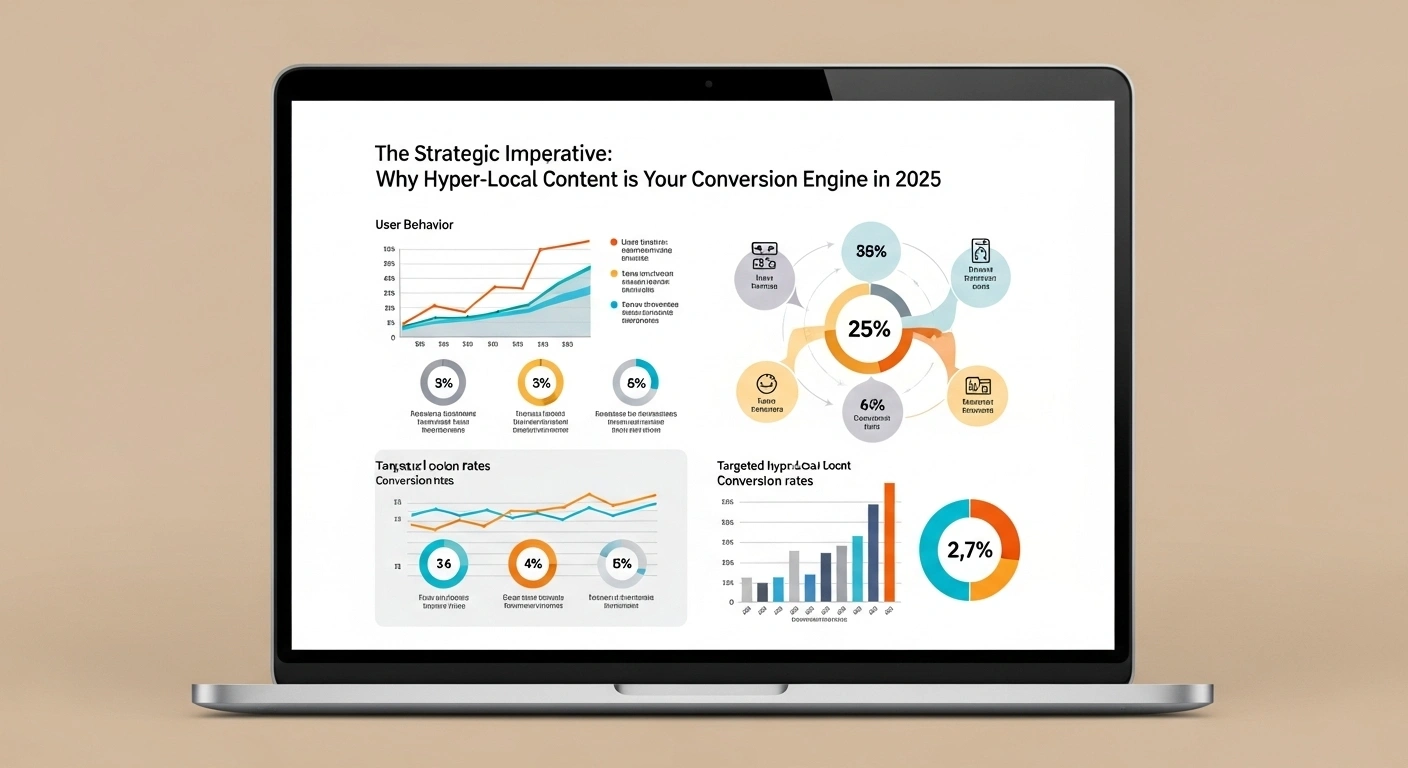
The first and most critical step in crafting truly converting hyper-local content is to identify topics and narratives that genuinely resonate with your specific Boston audience. This requires a sophisticated blend of traditional keyword research, a deep, nuanced understanding of the local market, and a creative, empathetic approach that puts the Bostonian customer at the center.
1. Deep Dive into Local Keyword Research & Intent Mapping: The Voice of Boston
Move far beyond surface-level “Boston + [keyword]” queries. Leverage advanced tools and methodologies to uncover granular, intent-rich phrases that reveal the specific needs and contexts of your target customers:
- Google Business Profile Insights (Your First-Party Data Goldmine): As covered in Post 2, the “Search queries” section of your GBP Insights provides invaluable first-party data on the *exact terms* people used to find your business. This is direct feedback from Google on what’s already working for you and where opportunities lie for content expansion.
- Google Autocomplete & “People Also Ask” (PAA): These are direct windows into Google’s real-time understanding of user intent and related queries. Start typing a local query (e.g., “best coffee shop [Boston neighborhood]”) and observe Google’s auto-suggestions. Then, analyze the “People Also Ask” box for related questions that users are actively asking. These are perfect springboards for generating highly relevant informational content that directly answers common queries.
- Advanced SEO Tools (Geo-Filtered): Utilize sophisticated SEO suites like Semrush, Ahrefs, Moz Keyword Explorer, and Google Keyword Planner. However, don’t just accept broad national results. Meticulously filter your keyword research by “Boston,” “Cambridge,” “Somerville,” specific zip codes, or even geo-coordinates to find relevant search volumes, keyword difficulty, and related queries specific to your service areas. Pay particular attention to long-tail keywords (longer, more specific phrases) as these often reveal higher intent and have lower competition (e.g., “affordable vegan bakery near Harvard Square,” “24-hour urgent care clinic Brighton”).
- Review Mining (Voice of the Customer): Conduct a thorough analysis of reviews on your own GBP and other platforms (Yelp, industry-specific sites), as well as those of your local competitors. Look for common phrases, recurring pain points, specific questions, or unique praises customers use. This provides direct insight into unfulfilled needs, service gaps, or opportunities to highlight your unique strengths in your content.
- Google Trends (Localized): Use Google Trends to identify trending local topics, seasonal interests, or major events within Massachusetts or specific Boston DMAs. This allows you to create timely, relevant content that captures surges in local search interest (e.g., “Boston Marathon training tips,” “Best places for holiday shopping in Boston”).
- Local Forums & Social Media Groups: Monitor discussions in active local Boston Facebook groups, Reddit threads (e.g., r/boston, r/somerville, r/cambridge), neighborhood associations’ forums, and platforms like Nextdoor. What questions are residents asking? What problems are they discussing? What local recommendations are they seeking? This provides genuine, unvarnished insights into real-world local needs and intent that can inspire compelling content.
By meticulously collecting and categorizing these keywords and intent signals by type (informational, transactional, etc.), you can construct a balanced and highly effective content calendar that strategically addresses your Boston audience’s needs at every stage of their buyer’s journey.
2. Leveraging Boston’s Unique Identity & Demographics: Crafting Authenticity
Boston isn’t just a city; it’s a vibrant tapestry of distinct neighborhoods, each possessing its own unique character, rich history, cultural nuances, and demographic makeup. To create truly authentic and compelling hyper-local content, you must tailor your narratives and offerings to these specific nuances, demonstrating a genuine “Boston Insider” perspective.
- Neighborhood Spotlights & Deep Dives: Create comprehensive guides or engaging blog series that focus exclusively on specific Boston neighborhoods. This allows for hyper-targeting and demonstrates deep local expertise.
- **North End:** Focus on its unparalleled Italian heritage, historic sites like the Old North Church, iconic food tours, authentic family-run restaurants, and specific cultural events like the annual Feasts (St. Anthony’s, Fisherman’s Feast). A restaurant could write “A Food Lover’s Guide to the North End Feasts.”
- **Beacon Hill:** Highlight its preserved historic architecture, cobblestone streets, upscale boutiques, quiet charm, proximity to the State House, and unique challenges of brownstone living (e.g., a contractor writing about “Navigating Permitting for Historic Renovations in Beacon Hill” or an interior designer showcasing “Classic & Contemporary Styles for Beacon Hill Homes”).
- **Back Bay:** Focus on luxury shopping (Newbury Street), upscale dining, cultural institutions (Boston Public Library, MFA), and its distinctive residential/professional mix. (e.g., a fashion boutique’s “Newbury Street Style Guide” or a fine dining establishment’s “Best Brunch Spots in Back Bay”).
- **Seaport District:** Emphasize its rapid modern development, burgeoning biotech/tech industries, waterfront dining, corporate event venues, and sleek new residential offerings. (e.g., a real estate agent’s “Ultimate Guide to Living in the Seaport for Young Professionals” or a restaurant promoting “Corporate Catering for Seaport Tech Firms”).
- **South End:** Focus on its vibrant artistic community, diverse culinary scene, LGBTQ+ friendly spaces, and unique housing stock. (e.g., a gallery’s “Guide to South End Open Studios” or a restaurant’s “Top Vegan & Vegetarian Options in the South End”).
- **Allston/Brighton:** Target student populations (BU, BC, Harvard Business School), dynamic live music venues, affordable dining options, and insights into the bustling rental market. (e.g., a moving company writing about “Student Moving Tips for Allston Apartments” or a casual eatery promoting “Budget-Friendly Eats for College Students in Brighton”).
- **Dorchester/Roxbury:** Embrace the rich cultural diversity, strong community spirit, local events, iconic landmarks, and specific needs of growing families and established residents. (e.g., a local clinic addressing specific community health needs, or a retail store highlighting local artists and community initiatives).
- **Cambridge/Somerville (Greater Boston):** Extend your content to these adjacent, highly relevant academic and tech hubs, recognizing their unique influence on the overall Boston ecosystem. (e.g., a tech recruiter’s “Guide to Tech Startups in Kendall Square” or a coffee shop’s “Best Study Spots Near Harvard Square”).
To inform this strategy, extensively utilize resources like the City of Boston Planning Department’s comprehensive neighborhood data (which uses census tracts to approximate neighborhoods) and the Boston University Diversity & Inclusion’s neighborhood guides to deeply understand specific demographics, income levels, predominant business types, and unique local characteristics. This data provides the factual backbone for truly authentic content.
- Local Pain Points & Solutions: Addressing the Bostonian’s Challenges: Create content that directly addresses common problems faced by Boston residents or businesses that you are uniquely positioned to solve. (e.g., “Finding Affordable Childcare in Boston’s Dense Urban Environment,” “Navigating Boston Traffic for Healthcare Appointments in the Longwood Medical Area,” “Dealing with Winter Weather Damage to Your Roof in Massachusetts: A Boston Perspective,” “Managing Pest Control in Historic Boston Homes”).
- Seasonal & Event-Driven Content: Leveraging Boston’s Vibrant Calendar: Align your content calendar with Boston’s rich array of annual events and seasonal shifts. (e.g., “Your Guide to Marathon Monday Spectator Spots & Local Eateries,” “Best Places to Watch Fourth of July Fireworks in Boston,” “Ultimate Holiday Shopping Guide for Newbury Street & Faneuil Hall,” “Boston Marathon Training Tips from Local Experts”).
- Community Contributions & Social Impact: Authenticity Through Action: Highlight your business’s active involvement in local charities, sponsorships of community events, or partnerships with local non-profits. This isn’t just marketing; it’s authentic storytelling that demonstrates your commitment to the Boston community, significantly building trust and enhancing your E-E-A-T.
3. Diversifying Content Formats: Beyond Text for Boston’s Dynamic Audience
While long-form text remains foundational for SEO depth, diversifying your content formats is absolutely crucial to engage Boston’s modern, selective, and often mobile-first audience. In 2025, video and audio content are no longer optional extras—they’re expected, with short-form video, in particular, seeing 120% higher engagement compared to static images, making it a powerhouse for capturing attention.
- In-depth Blog Posts & Guides: Long-form, meticulously researched, and detailed guides (like this very series!) are highly valued by Google’s HCS, especially for complex topics. Break them up with clear headings, bullet points, numbered lists, and compelling visuals for optimal readability and AI parsing.
- Conversion-Focused Local Landing Pages: Dedicated pages for specific services or locations, meticulously designed for conversion (as detailed further below).
- FAQs & Knowledge Bases: Structured content providing direct, concise answers to common local questions. Ideal for Featured Snippets and AI Overviews.
- Videos: Your Dynamic Storytelling Medium:
- Short-Form (15-60 seconds): Ideal for Google Business Profile Posts, social media (Instagram Reels, TikTok), and quick website snippets. Showcase a quick facility tour, a product highlight, or a brief “how-to” tip relevant to Boston.
- Long-Form (2-10 minutes): Suitable for YouTube (the second largest search engine) and embedding on your website. Examples: detailed service explanations, customer testimonials, “day in the life” of your Boston team, virtual tours of your space, or local event recaps.
- Explainer Videos: Visually break down complex services or products in an easy-to-understand format.
- Live Streams: Host Q&A sessions or product launches relevant to your Boston audience.
- Infographics & Data Visualizations: Present complex local data (e.g., Boston real estate trends by neighborhood, local economic impact of your industry) in an easy-to-understand, visually appealing format. These are highly shareable, link-worthy, and excel at conveying information quickly.
- Podcasts/Audio Content: For longer-form content or interviews with local Boston experts (e.g., a local historian, an urban planner, a community leader), consider a podcast series. This caters to Bostonians on their commute or during daily activities.
- Interactive Content: Quizzes (e.g., “Which Boston Neighborhood is Right for You?”), polls, or calculators (e.g., “How Much Does a Bathroom Remodel Cost in Cambridge?”) increase engagement, gather valuable first-party data, and provide personalized value to users.
—
Crafting Hyper-Local Content That Converts: Meticulous Execution & Persuasion
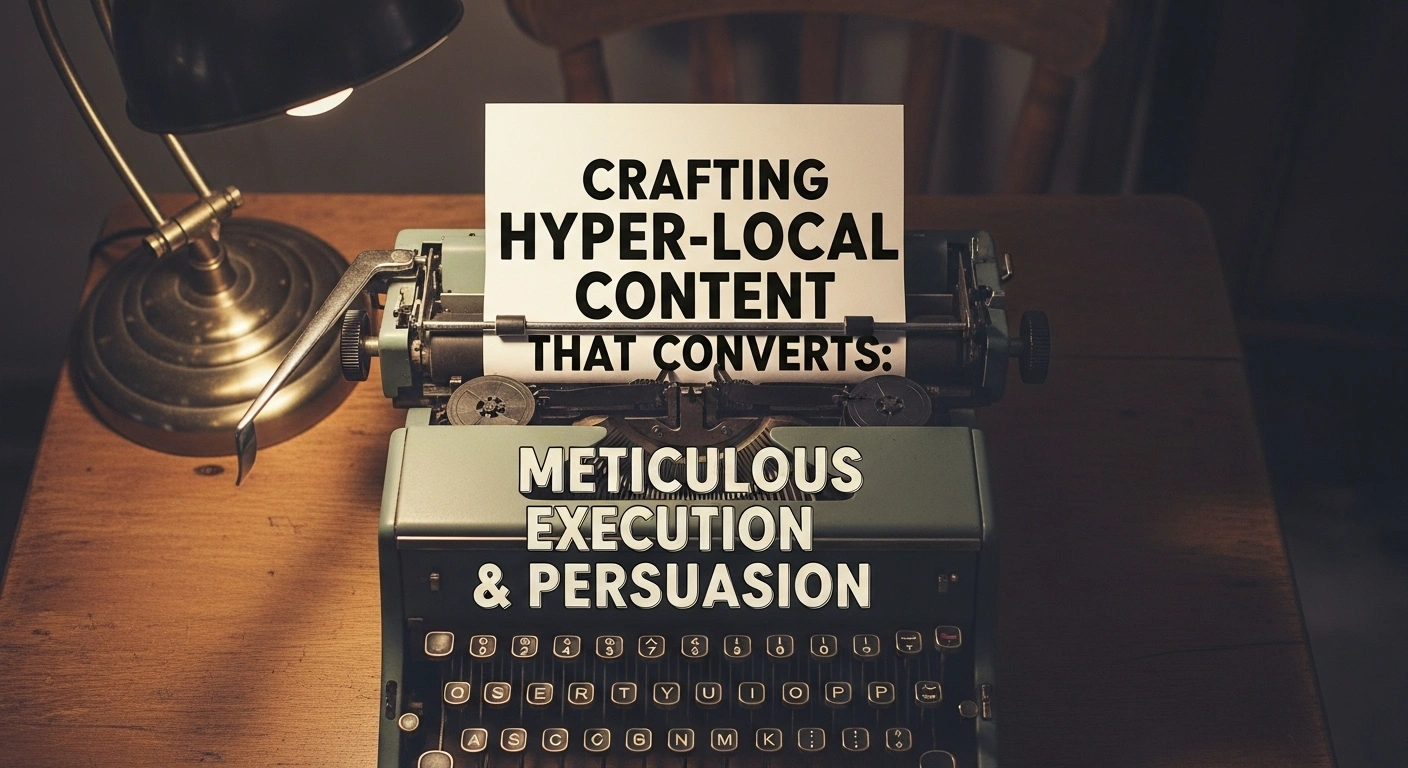
Ideation is just the starting point. The true power of your hyper-local content lies in its meticulous execution—designed not just for readability and search engine visibility, but for maximum conversion and optimal performance in Google’s increasingly AI-driven search environment.
1. Long-Form & Comprehensive: The Depth Imperative for Authority
Google’s Helpful Content System (HCS) and recent Core Updates (including July 2025) fundamentally prioritize content that thoroughly addresses user needs and comprehensively fulfills their intent. Short, superficial posts with vague advice will be overlooked. In 2025, the most effective content for competitive local terms is deeply researched, uniquely insightful, and structured for optimal readability.
- Thoroughness: Cover every facet of a topic, addressing key subtopics, common pain points, and answering related questions to provide a well-rounded, definitive resource. For example, a guide on “Buying Your First Home in Boston” should cover neighborhoods, financing, legal aspects, local market specifics, and common challenges.
- Unique Insights & Originality: Your content must offer something genuinely new or a unique local perspective that cannot be easily replicated by AI or found on a thousand other websites. This could include original research (local surveys, data analysis), unique case studies from your Boston clientele, or proprietary insights gained from your business’s experience. This directly contributes to your “Experience” (E) in E-E-A-T.
- Structured for AI and Humans: Use clear, logical headings (H1, H2, H3, H4), short concise paragraphs, bullet points, and numbered lists. This not only enhances human readability but also helps Google’s AI (like Gemini) easily parse and extract key information for AI Overviews and direct answers. AI Overviews prefer content with decision-making frameworks (comparison tables, pros/cons lists) and content structured for “skimmable synthesis.”
2. Content Structure & Readability: Designed for Discerning Bostonians
Even the most comprehensive, long-form content must be easily scannable and digestible for the time-poor Boston business owner or resident, who often consumes content on the go via mobile devices.
- Compelling Headlines (H1): Your main heading should be clear, concise, and include your primary local keyword. It is your promise to the reader about the page’s content. (e.g., “Ultimate Guide to Finding a Reliable Plumber in Boston’s South End”).
- Strategic Subheadings (H2, H3, H4): Break down your content into logical, bite-sized, and thematic sections. Use descriptive subheadings that include variations of relevant local keywords and address specific aspects of user intent. This creates a clear hierarchy for both users and search engine crawlers.
- Short Paragraphs: Avoid dense, intimidating blocks of text. Keep paragraphs to 3-5 sentences for optimal readability, especially on mobile devices.
- Bullet Points & Numbered Lists: Excellent for presenting information clearly, making it easily scannable, and ideal for potential Featured Snippets or AI Overviews in Google, which often extract information in list formats.
- Ample White Space: Use sufficient white space around text and images to improve visual appeal, reduce cognitive load, and make the page feel less overwhelming.
- Natural Language Flow: Write conversationally, as if you’re speaking directly to a Bostonian customer. Avoid jargon unless it’s industry-specific and clearly explained for broader understanding. Google’s Natural Language Processing (NLP) capabilities are highly sophisticated, rewarding natural, user-friendly language over forced keyword stuffing.
3. Crafting Persuasive Calls to Action (CTAs): Guiding the Conversion
Every piece of hyper-local content, regardless of its primary intent (informational, commercial investigation), should have a clear, compelling, and strategically placed next step for the user. Your CTAs must be persuasive, localized, and frictionless.
- Match CTA to Intent & Funnel Stage:
- **Informational Content (TOFU):** Use softer CTAs that encourage deeper engagement without immediate pressure (e.g., “Download Our Free Boston Homeowner’s Guide to Winterizing,” “Subscribe to Our Newsletter for More Local Tips from Our Beacon Hill Experts,” “Read Our Full Guide to Finding Parking in the North End”).
- **Commercial Investigation Content (MOFU):** Guide users towards comparison or consultation (e.g., “Compare Our Boston Real Estate Services,” “Schedule a Consultation with Our Financial District Experts,” “Read Reviews from Our South End Clients”).
- **Transactional Content (BOFU):** Direct, high-impact CTAs designed for immediate action (e.g., “Book Your Appointment Now at Our Back Bay Dental Clinic,” “Get Your Free Quote for Commercial Cleaning Services in the Seaport,” “Order Pizza Delivery to Allston Now,” “Call Us for Emergency Plumbing in Charlestown”).
- Strategic Placement: Place CTAs where they are most effective:
- **Above the Fold:** A clear, concise, benefit-driven CTA near the top of the page for high-intent users who are ready to convert immediately.
- Mid-Content: As users scroll and absorb information, offer relevant CTAs at natural breaking points where they’ve gained enough confidence to consider the next step.
- End of Content: A final, strong CTA after all information has been presented, summarizing the benefit and guiding the user.
- Sticky/Floating CTAs: Consider subtle sticky buttons or bars for consistent visibility as users scroll.
- Pop-ups/Exit Intent: Use sparingly and strategically, offering a high-value incentive (e.g., a localized discount, a free guide) as a user is about to leave your site, to capture their attention one last time.
- Compelling Wording: Use strong, action-oriented verbs. Highlight clear benefits and incorporate local context to make the CTA more relevant (e.g., “Solve Your [Boston-specific problem] Today,” “Experience [Your Unique Selling Proposition] in [Neighborhood],” “Book Your Tour of Our Cambridge Innovation Hub”). Create a sense of urgency or exclusivity when appropriate.
4. Storytelling & Boston Voice: Infusing Local Authenticity
Boston has a rich, multifaceted narrative—a blend of revolutionary history, academic prowess, innovation, and diverse neighborhood cultures. Weave your business into this story. This human-centric storytelling drives emotional connection and authenticity, which are critical for gaining trust with modern consumers who prioritize transparency and relatability (AppLabX 2025).
- Local Anecdotes & Vignettes: Share brief, relevant stories or examples about serving customers in specific Boston neighborhoods. For instance, a florist in the South End could share a story about creating unique arrangements for a historic brownstone wedding.
- Historical Context: If relevant to your business, connect your services or products to Boston’s rich history or unique architectural styles. A roofing company might discuss the challenges and techniques of repairing historical slate roofs in Beacon Hill.
- Team Spotlights & Local Roots: Introduce your local team members, highlighting their connections to the Boston community. Show how their personal Boston experiences inform their work. This humanizes your brand and builds a deeper local bond.
- Show, Don’t Just Tell: Use vivid descriptions and compelling imagery that evoke Boston’s unique atmosphere, whether it’s the bustling energy of the Financial District, the academic calm of Cambridge, or the community warmth of Dorchester.
- Local Language & Vernacular: Infuse your content with natural, local phrases or references (without overdoing it) that resonate with Bostonians, making the content feel more authentic and relatable.
5. Originality & Unique Insights: Your Superpower in an AI-Driven World
With the proliferation of online content, especially with the capabilities of AI, **originality is your ultimate superpower**. Your hyper-local content *must* offer something genuinely new, a unique local perspective, or proprietary data that cannot be easily replicated by AI or found on a thousand other websites. This is Google’s core message with HCS and its emphasis on E-E-A-T.
- Primary Research & Local Data: Conduct original surveys with Boston residents, perform interviews with local experts or business owners, or analyze unique local data sets (e.g., city planning documents, local historical archives, unique sales data from your business). Publish your findings and insights. This kind of original research is highly linkable and demonstrates unparalleled Experience and Expertise.
- In-depth Case Studies: Develop detailed case studies showcasing specific successes with your Boston clients. Detail the initial problem, your unique solution tailored to the Boston context, and the measurable results. These are incredibly persuasive for commercial investigation intent and provide tangible proof of your capabilities.
- Unique Perspectives & Expert Commentary: Offer a distinct opinion, analysis, or expert commentary on a local trend, policy, or issue within your industry. Position your business as a thought leader on Boston-specific topics (e.g., a real estate firm providing unique insights into the shifting Boston commercial market after remote work).
- Proprietary Methods/Processes: If your Boston business has a unique approach or methodology for delivering services, detail it in your content. This demonstrates a unique Experience and Expertise that sets you apart.
Google’s HCS explicitly rewards content that provides a truly satisfying and unique answer to a user’s query, especially if it’s original and demonstrates unique expertise. In the era of AI Overviews, this is paramount: your content is more likely to be featured if it offers genuinely new, authoritative insights that AI agents can synthesize.
—
Technical SEO for Hyper-Local Content: Enabling Discoverability & Performance
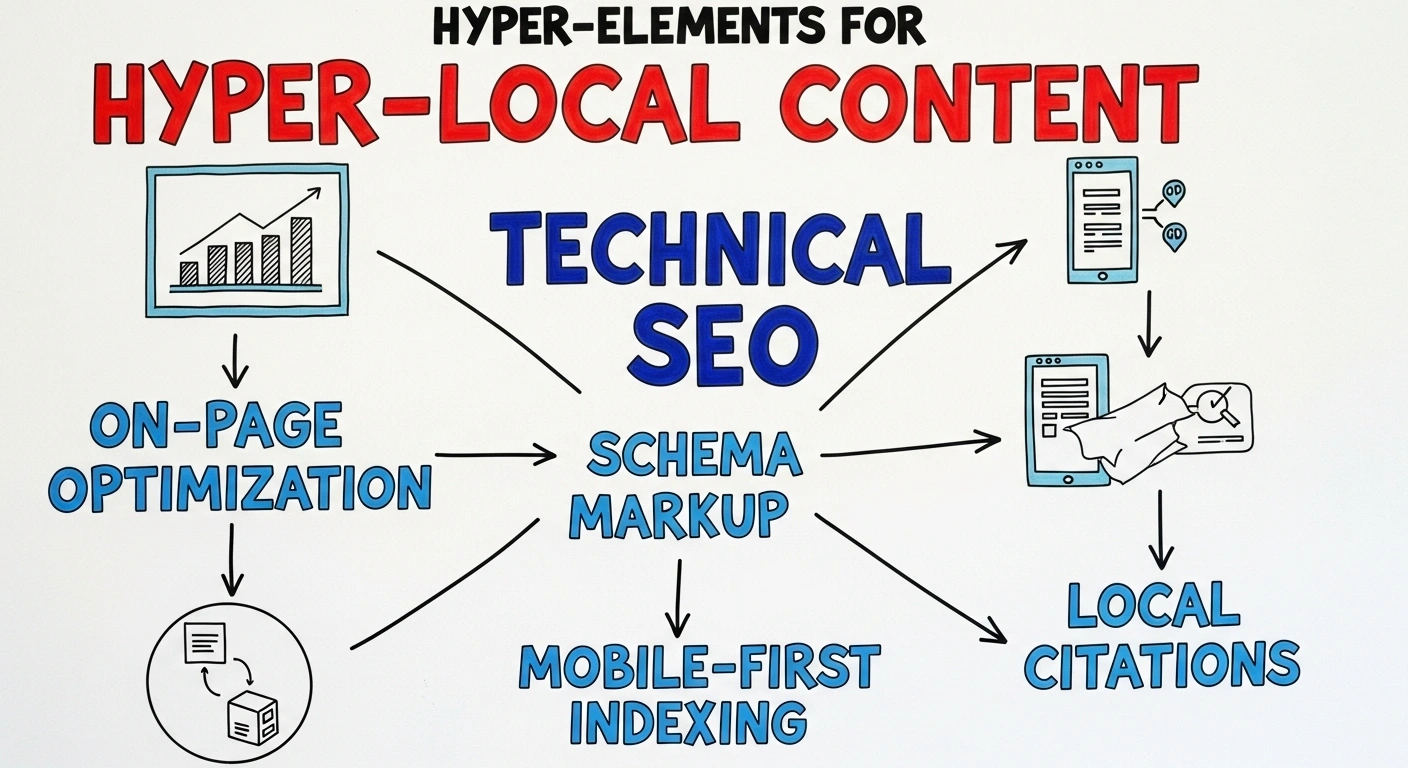
Even the most compelling, well-written hyper-local content won’t convert if it’s not technically optimized for Google’s complex crawlers and designed for an exceptional user experience. Technical SEO ensures your content is discoverable, loads rapidly, and is accessible to all users, laying the bedrock for its conversion potential.
1. Schema Markup: Speaking Google’s Language for Local Context
Schema markup (structured data) is code that helps Google better understand the content on your pages. While it doesn’t directly boost rankings, it enhances your visibility by enabling rich snippets and direct answers in search results, which can significantly improve click-through rates, especially for intent-driven queries. The importance of schema markup has become even more pronounced with Google’s recent Helpful Content updates and the rise of AI Overviews.
- Local Business Schema (`LocalBusiness`): This is absolutely essential for any local business. Implement this on your homepage and all specific location/service area pages. It explicitly tells Google your business name, address, phone number (NAP), hours of operation, reviews, and categories, making it easier for Google to connect your content to local search intent. It also allows your business to appear with enhanced local results.
- Service Schema (`Service`) and Product Schema (`Product`): For transactional pages, these provide granular details about your specific services (e.g., “HVAC Repair in Southie”) and products (e.g., “Artisan Pastries in the North End”), including pricing, availability, and customer reviews. This can lead to rich results in search, directly fulfilling transactional intent.
- FAQPage Schema (`FAQPage`): For any Frequently Asked Questions (FAQ) sections on your website or embedded within blog posts, this allows Google to display direct answers to user questions, often within the “People Also Ask” section or directly within AI Overviews. This is critical for fulfilling informational intent quickly.
- Review/AggregateRating Schema (`Review`, `AggregateRating`): Displays star ratings directly in organic search results, a powerful visual cue for commercial investigation intent, directly boosting trust and click-through rates.
- Other Relevant Schemas: Consider Event Schema for local events you host or participate in, Article Schema for blog posts, and VideoObject Schema for embedded videos.
Meticulous implementation of schema markup ensures your hyper-local content provides structured, machine-readable information to Google’s AI, maximizing its chances of being understood and displayed prominently.
2. Internal Linking: Building a Logical Content Network for Boston’s Ecosystem
A robust and logical internal linking structure helps Google’s crawlers understand your site’s hierarchy, distribute “link juice” (ranking power) across your pages, and, crucially, guide users through related, valuable content on your site. For hyper-local content, this means creating a seamless flow that mirrors the interconnectedness of Boston’s neighborhoods and services.
- Connecting Localized Pages: Link strategically from a general “Services” page to specific “Southie Plumbing Services” or “Financial District Legal Counsel” pages. Create internal links between related blog posts (e.g., a “Guide to Boston’s Best Breweries” might link to a “Best Restaurants in Seaport” page if one features locally brewed beer).
- Contextual Links: Embed natural, keyword-rich internal links within the body content of your blog posts and service pages. For example, from a blog post about “Exploring Beacon Hill,” you might link to your “Beacon Hill Boutique” service page.
- Anchor Text Strategy: Use descriptive, keyword-rich anchor text for internal links (e.g., “learn more about our Boston plumbing services” or “discover our authentic North End Italian restaurant”). Avoid generic “click here.”
- Hub-and-Spoke Model: For extensive content, consider a topic cluster or hub-and-spoke model, where a central pillar page (e.g., “Guide to Boston Neighborhoods”) links out to numerous supporting cluster content pieces (individual neighborhood pages like “Living in Jamaica Plain,” “Exploring Cambridge’s Tech Scene,” etc.), all interlinked.
3. Mobile-First Design & Core Web Vitals: Performance for Boston’s Mobile Users
Bostonians are highly mobile, frequently searching on smartphones while on the go. Your content must not only load rapidly but also display flawlessly and interact fluidly on all mobile devices. Google’s mobile-first indexing means it primarily uses the mobile version of your content for ranking. Core Web Vitals (CWV) are critical performance metrics that directly impact your content’s visibility and user experience:
- Largest Contentful Paint (LCP): Measures loading performance. Ensure your main content (the largest element visible in the viewport) loads quickly. Optimize hero images, prioritize critical CSS, and use content delivery networks (CDNs).
- Interaction to Next Paint (INP): Measures responsiveness (how quickly your page responds to user interaction, such as clicks, taps, or keypresses). This replaced FID (First Input Delay) as a core metric in March 2024. A fast, interactive page is crucial for local searches where users expect immediate results (e.g., clicking a menu item on a restaurant’s site).
- Cumulative Layout Shift (CLS): Measures visual stability. Content shouldn’t jump around unexpectedly as it loads, preventing frustrating user experiences (e.g., a “Book Now” button suddenly shifting as an ad loads above it).
Poor CWV can directly impact your rankings, even if your content is excellent. A slow page may even be excluded from AI Overviews, regardless of its relevance. Optimize images (compress, use modern formats like WebP), leverage browser caching, minimize unnecessary JavaScript/CSS, and consider a Content Delivery Network (CDN) for faster global (and local) delivery.
4. URL Structure: Clean, Descriptive & Geo-Relevant
Your URLs should be clean, descriptive, and logically structured, incorporating relevant keywords and location modifiers where appropriate. A clear URL helps both users and search engines understand the content of the page before they even click.
- Readability: URLs should be easy to read and understand. (e.g., `yourdomain.com/blog/best-pizza-north-end-boston/` is better than `yourdomain.com/p?id=123`).
- Keyword Inclusion: Include primary keywords and geo-modifiers. (e.g., `yourdomain.com/services/hvac-repair-jamaica-plain/`).
- Hyphens for Separation: Use hyphens (`-`) to separate words, not underscores (`_`).
- Avoid Keyword Stuffing: Do not stuff excessive keywords into URLs; keep them natural and concise.
5. XML Sitemaps & Robots.txt: Guiding Google’s Crawlers
These technical files are crucial for efficient crawling and indexing of your hyper-local content.
- XML Sitemap: Ensure your website has an up-to-date XML sitemap that lists all your important local content pages (blog posts, service area pages, FAQs). This acts as a roadmap for Google’s crawlers. Submit this sitemap to Google Search Console.
- Robots.txt: Use your `robots.txt` file to guide search engine crawlers to your most valuable content and prevent them from wasting crawl budget on less important or duplicate pages (e.g., internal search results pages). This helps ensure your hyper-local content is efficiently discovered and indexed.
—
AI’s Transformative Impact on Hyper-Local Content Strategy in 2025

Artificial Intelligence is not just influencing how search results are presented; it’s fundamentally reshaping how we approach content creation, optimization, and consumption. For Boston businesses, understanding AI’s pervasive role is critical for future-proofing your content strategy and maintaining competitive relevance.
1. AI as a Content Assistant: Enhancing Human Expertise, Not Replacing Bostonian Authenticity
AI tools can significantly enhance your content workflow and efficiency, but they cannot replace the unique experience, local insights, cultural nuance, and authentic human touch that define true E-E-A-T for a Boston audience. AI tools are now sophisticated enough to assist in content creation, generating outlines, suggesting relevant keywords, and even drafting entire articles. However, Google’s stance remains clear: human oversight is crucial for quality and originality.
- Ideation & Outlining: Use AI to brainstorm hyper-local blog topics (e.g., “Top Challenges for Small Businesses in the Seaport”), generate detailed outlines for location pages, or expand on specific local challenges facing Boston residents (e.g., “Navigating Public Transit for Medical Appointments in the Longwood Medical Area”).
- Keyword Research & Intent Analysis: AI-powered tools can analyze vast volumes of data to identify trending local keywords, understand nuanced search intent, and provide insights into competitor strategies at a granular level. They can identify long-tail phrases and semantically linked terms, strengthening your keyword strategy without requiring manual guesswork.
- Drafting & Grammar: AI can accelerate initial content drafting, perform comprehensive grammar checks, and assist with basic rephrasing, freeing up human writers to focus on deep research, fact-checking, unique insights, and infusing authentic Boston storytelling.
- Content Gaps Identification: AI can efficiently analyze your website and compare it to competitor content, identifying critical content gaps or areas where your coverage is insufficient, allowing you to prioritize new content creation.
- Personalization & Localization: AI can help tailor content based on inferred user location or preferences, suggesting localized examples or cultural references.
The key is to maintain a “human-AI balance.” Your Boston content should always be human-centric, demonstrate genuine experience and empathy, and resonate authentically with local culture and values, even if AI assists in the behind-the-scenes processes. AI-generated content can rank, but only if it meets Google’s quality and E-E-A-T standards, requiring human refinement.
2. Content as “Information Building Blocks” for AI Overviews
With Google’s Search Generative Experience (SGE) and AI Overviews becoming more prominent in search results, the fundamental goal of your content is shifting. It’s no longer solely about securing a click; it’s about being recognized as a trusted, authoritative source that Google’s AI can confidently use to synthesize and present answers directly to user queries. As eLearning Industry accurately states, “while with traditional SEO your goal was clicks and impressions, now your objective is information retrieval.”
- Conciseness & Clarity for Synthesis: Structure your content with clear, logical headings, concise paragraphs, bullet points, and numbered lists so Google’s AI can easily parse and extract key information for its summaries. AI Overviews prefer content structured for “skimmable synthesis,” making it easier to pull direct answers.
- Accuracy & Authority for Trust: Ensure your facts are impeccable and your content is backed by strong E-E-A-T. AI will prioritize authoritative, trustworthy sources for its generated answers. If AI detects inaccuracies or low quality, your content won’t be featured.
- Originality & Depth: AI wants to synthesize unique, valuable information. Provide original research, proprietary insights, Boston-specific data, or unique perspectives that AI can’t easily pull from a thousand other generic sources. This reinforces your distinctiveness.
- The “Query Fan-Out” Effect: Google’s AI Mode (now powered by Gemini 2.5) uses a “query fan-out” technique, breaking complex questions into multiple sub-queries to gather comprehensive information. This means your content should cover a topic thoroughly, anticipating related questions and providing a holistic answer. This makes your site a more valuable repository for AI to draw from.
- Decision-Making Frameworks: AI Overviews often prefer content that offers decision-making frameworks, such as comparison tables, pros/cons lists, or scoring matrices. Optimizing your local content with these structures (e.g., “Comparison of Boston Neighborhoods for Young Professionals,” “Pros and Cons of Different Heating Systems for Historic Boston Homes”) makes it highly attractive for AI synthesis (NFlow Tech).
3. Personalization & Predictive Analytics: Tailoring Content to Individual Bostonians
AI enables unprecedented levels of content personalization and predictive insights, allowing Boston businesses to anticipate and respond to customer needs with remarkable precision.
- Dynamic Content: Future website experiences might dynamically adjust content based on a user’s detected location within Boston or their inferred preferences (e.g., showing specific neighborhood-relevant testimonials, offers, or service options). This creates a highly customized and engaging experience.
- Predictive Insights: AI can analyze vast amounts of historical data, behavioral patterns, and trending local queries to predict emerging local search trends. This allows Boston businesses to proactively create content for new local needs or seasonal demands before competitors even realize the opportunity.
- User Behavior Analysis: AI tools can analyze granular user interactions on your site (scroll depth, click paths, time spent on specific sections) to understand what content is truly resonating and fulfilling user intent, informing future content optimization.
—
Measuring Hyper-Local Content Performance: Beyond Vanity Metrics for Boston Businesses

To ensure your hyper-local content is truly converting and delivering tangible value, you must move beyond superficial vanity metrics (like raw page views) and meticulously focus on key performance indicators (KPIs) that directly demonstrate genuine business impact. This requires leveraging a suite of powerful analytics tools, with a keen eye for Boston-specific data.
1. Google Analytics 4 (GA4): Deep User Behavior & Conversion Insights
GA4, with its event-based data model, provides powerful insights into how users interact with your hyper-local content and their conversion pathways. This is crucial for understanding the effectiveness of your content in moving users down the funnel.
- Engaged Sessions & Engagement Rate: Track sessions where users spend a meaningful amount of time (e.g., >10 seconds), view multiple pages, or trigger conversion events. This indicates that your informational or commercial investigation content is genuinely engaging and fulfilling user intent, not just being clicked on.
- Conversions (Your Ultimate KPIs): Set up specific, measurable conversions for actions that directly demonstrate intent or lead to revenue:
- Phone calls (via tracked numbers implemented on your site).
- Contact form submissions (e.g., “Request a Boston Quote,” “Schedule Consultation”).
- Online purchases or bookings specific to your services or products.
- Clicks on “Get Directions” buttons on your local landing pages or within embedded maps (direct foot traffic).
- Downloads of localized guides, whitepapers, or resources (e.g., “Boston Homeowner’s Guide to Renovations”).
- Clicks on specific buttons (e.g., “View Menu,” “Book Appointment”).
Analyze these conversions by specific landing pages (your local service area pages, relevant blog posts) to understand precisely which content pieces are driving direct action and revenue.
- Page Views & Landing Pages: Identify which of your hyper-local content pages (e.g., “Best Italian Restaurants North End,” “Southie Plumbing Services,” “Financial Advisor Back Bay”) are attracting the most traffic. Correlate this with engagement and conversion metrics to assess their effectiveness beyond initial visits.
- User Flow & Paths Exploration: Analyze how users navigate your site after landing on a hyper-local content page. Do they move from an informational blog post (e.g., “Guide to Living in Dorchester”) to a relevant service page (e.g., “Dorchester Real Estate Agents”)? Or do they click on a “Call Now” button? This illuminates successful journeys through your intent-driven content funnel.
- Geo-Location Data: GA4 provides granular geographic data. Segment your audience by city, region, and, where sufficient data volume exists, even narrower geographic segments within Boston (e.g., zip codes, specific neighborhoods). This helps you understand intent variations by locale and confirm that your content is effectively reaching and resonating with the intended Boston audience segments.
2. Google Search Console (GSC): Understanding Google’s Perception & Performance
Google Search Console (GSC) is your direct pipeline to understanding how Google perceives your hyper-local content, how it performs in search results, and how it aligns with algorithm updates. It provides invaluable data directly from Google itself.
- Performance Report (Queries & Pages): Analyze the specific search queries for which your hyper-local pages are appearing in search results and their click-through rates (CTR). Filter by specific pages (your local landing pages, detailed blog posts) to see if they’re ranking for your target geo-modified and intent-rich keywords. A high CTR for a specific local query indicates Google’s algorithm sees your page as highly relevant and compelling for that intent.
- Performance Report (Countries/Cities Filter): While GSC might not provide granular neighborhood data within Boston, you can filter your performance data by specific cities (Boston, Cambridge, Newton) or broader regions (Massachusetts) to confirm your visibility in your target geographic areas.
- Core Web Vitals Report: Monitor the real-world performance of your hyper-local content pages. Pages with poor CWV scores will be deprioritized in rankings, regardless of content quality. Use this report to identify and fix performance bottlenecks that could be hindering your content’s visibility and user experience.
- Enhancements Report: Check for any issues with schema markup (Local Business, FAQPage, Product/Service) or other structured data implementations. Errors here can prevent your content from appearing as rich snippets or being featured in AI Overviews, directly impacting intent fulfillment.
- Indexing & Crawl Stats: Ensure all your valuable hyper-local content pages are being crawled and indexed by Google. Address any `noindex` tags or crawl errors that might prevent your content from being discovered.
3. Google Business Profile Insights: The Direct Local Connection
While primarily focused on your GBP itself, the “Insights” section provides a crucial overlap with your website content’s performance, especially for local businesses.
- Search Queries: Review the exact keywords users typed that led to your GBP listing. Compare these to the keywords you’re targeting with your website content. This can identify new content opportunities or confirm existing content’s relevance.
- Customer Actions: Track direct calls, direction requests, and website clicks originating from your GBP. If your hyper-local website content is effectively pushing users to your GBP (e.g., through internal links to your contact page, or a clear “Get Directions” CTA on a local service page), these metrics will reflect it.
- Photo/Post Views: Analyze which types of visual content and GBP posts are resonating most with local audiences. This feedback can inform your broader visual content strategy on your website.
4. Specialized Local SEO Rank Tracking Tools: Hyper-Granular Geographic Performance
For truly advanced geo-targeting analysis and competitive intelligence, invest in a specialized local SEO rank tracking tool (e.g., BrightLocal, Semrush Local SEO, Whitespark Local Rank Tracker, SERPwatch, Map Rank). These tools go beyond general rank tracking and allow you to monitor your rankings for specific keywords *from different zip codes, specific street addresses, or even precise points on a map* within Boston.
- Hyper-Local Rank Tracking: Monitor your position in the local pack and localized organic results for terms like “best coffee shop 02108” (Financial District) or “plumber near me Jamaica Plain” from the perspective of a user in that specific location.
- Competitive Analysis: See precisely how your local competitors are performing for geo-targeted terms in various areas. Identify their content strengths and weaknesses to inform your own strategy.
- Visual Heatmaps: Many tools offer visual heatmaps that show your ranking performance across a geographic grid within Boston, immediately highlighting areas where your hyper-local content is strong and where you need to improve your targeting efforts.
This granular data is essential for understanding your content’s true geographic reach and its ability to fulfill intent in Boston’s complex and diverse neighborhoods, allowing for precision adjustments to your content strategy.
—
Conclusion: Your Hyper-Local Content — The Voice of Boston Dominance

In the dynamic and discerning Boston market of 2025, generic content is functionally invisible. To truly dominate local search and drive sustainable conversions, your business needs to speak directly to the heart and needs of its audience through **hyper-local content**. This demands a strategic evolution: moving far beyond superficial keyword matching to deeply understand and meticulously fulfill the nuanced intent of every Bostonian searcher, from their informational curiosities about iconic landmarks to their immediate transactional needs for a service delivered right in their neighborhood.
By committing to a rigorous process of local intent research, crafting comprehensive, original, and genuinely helpful content that demonstrably showcases your business’s unparalleled E-E-A-T, leveraging diverse content formats tailored for Boston’s dynamic audience, and optimizing every on-page and technical element for maximum local relevance and performance, you transform your website into an authoritative digital resource. This strategic content approach, continuously refined through meticulous data analysis and a keen understanding of Google’s evolving AI algorithms, not only aligns perfectly with the future of search but also builds profound trust and unwavering loyalty within Boston’s vibrant communities. Your hyper-local content becomes not just information, but a compelling, persuasive narrative that compels Bostonians to choose your business, cementing your status as a trusted local leader and ensuring your enduring success in this new economic reality.
This comprehensive guide has provided the definitive blueprint for crafting hyper-local content that truly converts and resonates with your Boston audience. But content, however compelling and conversion-focused, needs to be seen and experienced beyond text. Next, we’ll delve into the unparalleled power of visuals—photos, videos, and immersive virtual tours—and how to meticulously optimize them to captivate Boston audiences and dominate visual search results. Because in a city as picturesque, historic, and dynamic as Boston, seeing truly is believing, and visually compelling content is your most powerful differentiator.
Is your Boston business’s content struggling to resonate with local audiences, fulfill specific search intents, or convert visitors into loyal customers? The experts at **seobostonma.com** specialize in crafting bespoke, data-driven hyper-local content strategies that integrate seamlessly with Google’s latest algorithms and the nuances of Boston’s market. We deliver measurable results for Boston businesses like yours. Schedule a free consultation with our team today and let’s transform your content into your most powerful local conversion engine, ensuring your business’s voice is not only heard but acted upon, leading to unparalleled local dominance.



